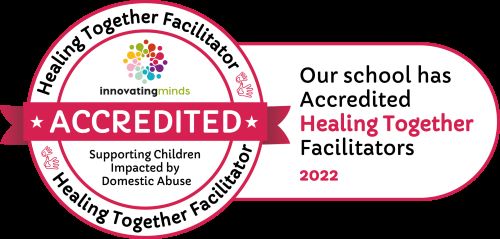Phonics
Introduction to Phonics

Phonics
Our Team:
Lucy Colley- EYFS Phonics Lead
Lydia Jordan- KS1 Phonic Lead
“Phonics is… making connections between the sounds of our spoken words (phonemes) and the letters that are used to write them down (graphemes)”.
At Hampton Hargate Primary, children begin to read in Reception using Phonics. We use the DfE approved systematic synthetic Phonics (SSP) scheme, ‘Little Wandle Letters and Sounds Revised’, where children concentrate on speaking and listening skills, preparing them for learning to read by developing their phonic knowledge and skills.
Reception children will learn to say and read all the single letter sounds (for example, s and m) and some digraphs. A digraph is where two letters make one sound (for example qu and sh).
In Year 1, children will learn the remaining graphemes in the Little Wandle Letters and Sounds Revised programme. These are alternative spellings for the sounds that they already know. The children will become more fluent readers and will read increasingly challenging texts.
CLICK HERE to find out why we use Phonics?
How is Phonics taught?
From Reception, children will take part in daily 20-minute Phonics lessons. The lessons take the format of:
Revisit and Review – Teach – Practise – Apply
Please see the video below which demonstrates a Year One Phonics lesson.
(Video of lesson from bottom of page)
CLICK HERE for the parent’s support page on the Little Wandle website. Which provides lots of useful information including videos to demonstrate the correct enunciation for each of the 44 sounds.
We support this further from year 2 and in Key Stage 2 with our spellings programme and weekly SPAG lessons in Year 3 upwards. We continue to support children with ‘Little Wandle Letters and Sounds Revised’ through Key Stage 2 where needed.
For further information, please speak with your child’s class teacher.
Tricky words
Children will also be introduced to ‘tricky words’ during their Phonics lessons. These are simply those words which do not follow the pattern of sounds taught through phonics and are spelt in an unusual or uncommon way. Tricky words will need to be learnt by sight.
CLICK HERE to see the ‘Support for Tricky Words’ document which shows the tricky words in the order they are taught and why they are tricky.
Year 1 Phonics Screening Check
The phonics screening check is a statutory National Curriculum Key Stage 1 assessment and will take place in June.
The assessment is carried out with a familiar adult and mainly focuses on phase 3 and 5 graphemes. Lots of work is carried out with the children in Year 1 to prepare them for the screening check and they will have participated in many practise papers so that they feel completely comfortable with what is expected of them.
The papers consist of 40 words, made up of real and nonsense words. They are asked to read the words accurately. They can make attempts to sound out but must be heard blending the word correctly. Children will practise ‘nonsense’ words as part of the Little Wandle programme to prepare them for the screening check. Nonsense words are used to ensure children are able to decode any word, even those that may not be in their vocabulary yet.
Children who do not pass the screening check can retake it in year 2 and will receive further support to prepare them, alongside their usual daily phonics lessons.
CLICK HERE for some further information from the standards and testing agency.
CLICK HERE for ideas of Phonics games to try at home
Reading at School in EYFS & Year One
Reading practise is an integral part of the ‘Little Wandle Letters and Sounds Revised’ scheme. Each week in Reception and Year 1 your child will take part in three practise reading sessions as part of a small group. Because these books are fully decodable and carefully matched to their phonics learning, the children should be able to confidently sound out and blend each word. The books include some ‘tricky words’ but these words are also matched to those covered in the children’s phonics sessions. The same book is read three times across the week to build children’s fluency as well as other skills like prosody and comprehension.
Each week your child will bring home reading books which are fully decodable. Children should be able to sound out any words that they are unsure of, enabling them to build further confidence when reading.
Across the school children access the library and choose any book that interests them. This book is usually above their reading level so is a book to share together with you reading to your child. Library books are changed regularly, subject to the library being accessible.
Children in year 2 and beyond also take part in similar reading practise or guided reading sessions every week to develop their reading skills once they are secure with phonics.
We would encourage you to support your child’s reading journey by listening to them read at home as often as possible and recording this in their reading record.
Please refer to our reading curriculum page for further information.
Here is a video demonstration of a phonics lesson in year 1. This shows use of sounding, blending and segmenting.
















